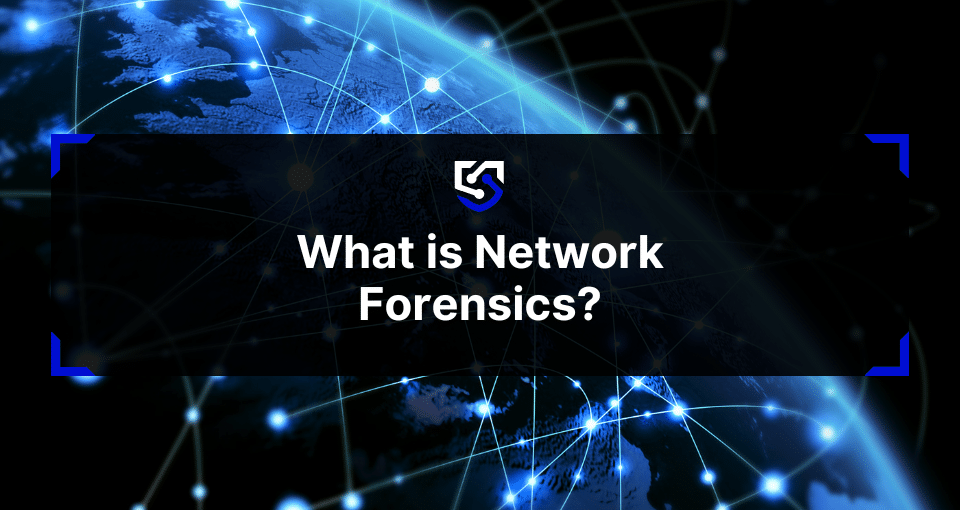Network forensics is the science of discovering and retrieving evidential information about a crime in a networked environment so that it can be used as evidence in court. It involves techniques that meet both legal and technical requirements and adhere to the rules of evidence and the criteria for admissibility as scientific evidence. Plus, it is an essential extension of network security that emphasizes not only the detection and prevention of attacks but also the investigation and analysis necessary for comprehensive cybersecurity strategies.
Unlike intrusion detection, all network forensics techniques should satisfy legal and technical requirements. For example, it is important to guarantee whether the developed network forensics solutions are practical and fast enough to be used in high-speed networks with heterogeneous network architecture and devices. More importantly, they must adhere to fundamental forensics principles, including the rules of evidence and criteria for the admissibility of new scientific evidence.
What is network forensics evidence?
Network forensics evidence refers to any data collected during a network forensics investigation that can be used to support legal claims or investigations. This evidence typically includes logs of network traffic, records of communications, and data packets transmitted over the network.
The five rules for evidence in network forensics
- Admissible: The evidence must be allowed to be used in court or other legal settings.
- Authentic: The evidence must be relevant and directly connected to the incident being investigated.
- Complete: The evidence should provide a complete picture, including all information that may indicate other suspects.
- Reliable: There must be no doubts about the truthfulness and accuracy of the evidence.
- Believable: The evidence should be clear, understandable, and credible enough for a jury to accept.
What are the two types of network forensics?
Network forensics can be categorized into two main types:
- Live Network Forensics: This involves the real-time monitoring and analysis of network traffic as it occurs. It allows forensics investigators to identify malicious activities and security incidents immediately, enabling prompt responses to threats.
- Post-Incident Forensics: This type focuses on the analysis of data after a security incident has occurred. It involves examining captured data and logs to reconstruct events and gather evidence for legal proceedings or organizational learning.
What are the steps of network forensics?
Network forensics involves a systematic investigative process designed to ensure that evidence is collected and preserved in a manner suitable for legal proceedings.
The primary steps include:
- Identification: Determine the scope of the investigation to establish what data needs to be collected and which tools will be required.
- Preservation: Safeguard the evidence by making copies of relevant data and storing it securely to maintain its integrity and chain of custody.
- Collection: Gather the data, which can be done manually or through automated tools, ensuring that all relevant information is documented.
- Examination: Analyze the collected data for patterns or anomalies that may indicate a security incident, tracking visible data along with its metadata.
- Analysis: Utilize the data from network traffic to understand what occurred during the incident and why it is significant.
- Presentation: Compile findings into a report or presentation that includes all relevant information and recommendations for improving security.
- Decision: Following the findings, identify the next steps, which may include incident response actions to address any identified threats.
Use cases and objectives of network forensics
Cybercrime investigations often encompass a wide range of cases, including those related to homeland security, corporate espionage, child exploitation, traditional crime facilitated by computer and network technology, employee monitoring, and the protection of medical records, where privacy is paramount. Network forensics plays a pivotal role in these investigations by providing the necessary tools and methodologies to analyze digital evidence effectively.
There are at least three distinct communities within digital forensics: law enforcement, military, and business and industry. Each community has its own objectives and priorities:
- Law Enforcement Agencies: These agencies primarily focus on prosecution, often investigating incidents after they have occurred. Their goal is to gather sufficient evidence to build strong cases against cybercriminals.
- Military Operations: The military aims to ensure the continuity of services with strict real-time requirements. Their focus is on immediate threat detection and response to protect national security interests.
- Business and Industry: Objectives in this sector vary widely; however, many organizations prioritize service availability and operational integrity over prosecution. They seek to mitigate risks and enhance their cybersecurity posture to protect sensitive data and maintain customer trust.
Applications of network forensics
Network forensics has several critical applications that contribute to the overall security and integrity of digital systems:
- Cybersecurity Operations: Network forensics continuously monitors network traffic for signs of intrusions, malware, or unauthorized access. This proactive approach helps security teams respond effectively to mitigate threats before they escalate.
- Data Privacy and Compliance: Network forensics plays a vital role in ensuring compliance with data protection regulations by providing a systematic process for collecting, analyzing, and preserving network data. This helps organizations demonstrate due diligence and avoid costly penalties associated with data breaches or privacy violations.
- Incident Response: Incident response teams utilize network forensics to understand the scope, impact, and entry points of attacks. This information facilitates swift containment and recovery in real time, minimizing damage.
- Legal Investigations: Law enforcement agencies and private investigators leverage network forensics to analyze network activities and communication patterns in cases involving cybercrime, data breaches, and online fraud. This analysis is crucial for building legal cases.
- Insider Threat Detection: By monitoring network activity for unusual or unauthorized actions by employees or contractors, network forensics identifies potential insider threats that could compromise organizational security.
- Network Performance Optimization: Beyond security concerns, network administrators can use network forensics to analyze performance issues, identify bottlenecks, and optimize data transmission across the network.
- Research and Development: Researchers explore network forensics investigations to advance their techniques for detecting and preventing cyber threats. This ongoing development contributes to the evolving landscape of cybersecurity solutions.
Tools for network forensics
Network forensics is a critical aspect of cybersecurity that involves collecting, analyzing, and preserving data from various network sources. Several specialized tools are available to assist forensic investigators in detecting, analyzing, and responding to cyber threats. Below, we explore the types of tools that are essential for effective network forensics.
Packet capture tools
Packet capture tools are designed to intercept and log network traffic for later analysis. They are essential for understanding the flow of data across a network and identifying potential security incidents.
Notable examples include:
- Wireshark: An open-source tool that provides deep inspection of hundreds of protocols, allowing users to capture and analyze packets in real-time.
- TCPDump: A command-line packet analyzer that captures and displays network traffic, making it suitable for quick diagnostics.
- Arkime: Formerly known as MISP, Arkime is an open-source tool that captures and indexes network traffic, providing a web interface for searching.
Full-packet capture tools
These tools capture all data passing through a network interface, providing a complete record of network activity.
Examples include:
- NetWitness Investigator: A comprehensive solution that captures full packets and enables detailed network traffic analysis.
- RSA NetWitness Platform: This platform combines packet capture with advanced analytics to detect threats in real-time.
Log analysis tools
Log analysis tools parse and analyze log files generated by various network devices, helping identify patterns and anomalies indicative of security incidents.
Key tools include:
- Splunk: A powerful log aggregation and analysis tool that captures, indexes, and correlates real-time data from multiple sources.
- ELK Stack (Elasticsearch, Logstash, Kibana): An open-source suite that allows users to collect, store, search, and visualize log data effectively.
- Graylog: An open-source log management platform that enables real-time log analysis and correlation.
NetFlow analysis tools
NetFlow analysis tools monitor flow data to identify traffic patterns and anomalies within the network.
Examples include:
- SolarWinds NetFlow Traffic Analyzer: A tool designed to analyze bandwidth usage and detect unusual traffic patterns.
- ManageEngine NetFlow Analyzer: This tool provides insights into network performance by analyzing flow data.
Security information and event management (SIEM) tools
SIEM tools provide a centralized view of log data from multiple devices on the network, facilitating comprehensive security monitoring.
Notable examples include:
- Splunk Enterprise Security: An extension of Splunk that focuses on security analytics and incident response.
- IBM QRadar: A SIEM solution that collects log data from various sources for real-time threat detection and compliance reporting.
Digital forensics platforms
These platforms offer a complete solution for network forensics, encompassing data collection, analysis, and reporting.
Examples include:
- RSA NetWitness Platform: Combines packet capture with advanced analytics for comprehensive threat detection.
- Splunk Enterprise Security: Integrates with other Splunk tools to provide a holistic view of security events.
Intrusion detection system (IDS) tools
IDS tools are designed to detect and alert on suspicious activities within the network. Examples include:
- Snort: One of the most popular open-source IDS solutions that provides real-time traffic analysis and packet logging.
- Suricata: An IDS/IPS engine capable of real-time intrusion detection and prevention.







